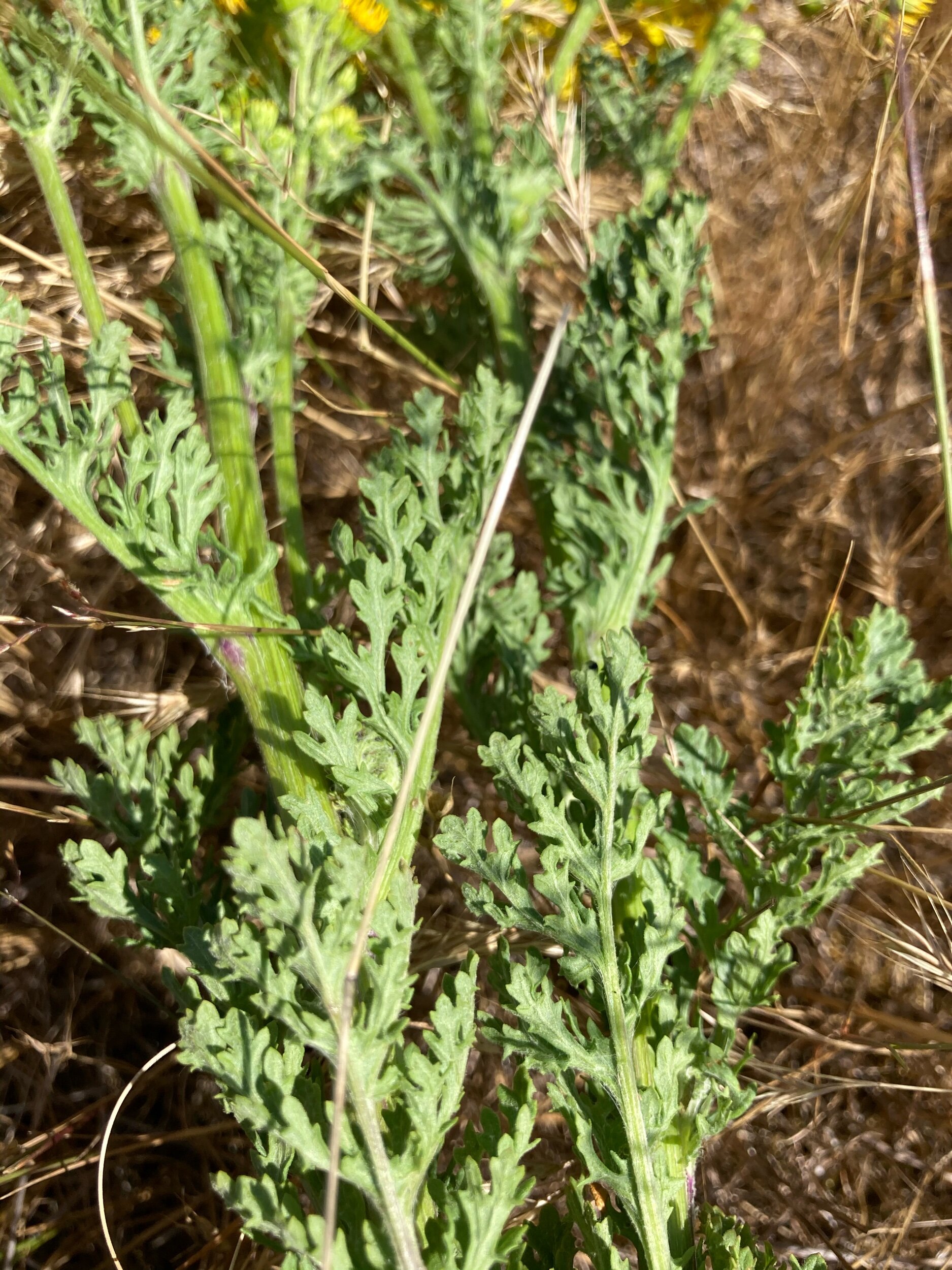Tansy Ragwort and St. John’s Wort in the Homestead Pasture.
It’s that time of the year again. It’s the time when yellow pasture weeds make a last stand for taking over the world. Unfortunately, many of them are poisonous. Tansy ragwort and St. John’s wort are two poisonous yellow pasture weeds that are often confused for each other. Let’s take a look at tansy ragwort vs. St. John’s wort.
Tansy Ragwort
Tansy Ragwort is a yellow pasture weed that is poisonous to all homestead animals except sheep. It is also toxic to humans. The leaves contain a toxic alkaloid that causes liver damage and liver failure when eaten.
Tansy ragwort in field.
In horses tansy poisoning will show as jaundice as well as slowness and depression. A poisoned animal may quit eating mid-bite. Horses and cattle will also just wander off into harm after being poisoned.
If your pasture contains more than 5% tansy then it can be impossible for animals to avoid consuming it. The problem with having that much tansy also is that a mature tansy plant can produce 150,000 seeds which can stay dormant in the soil for 10 years or more.
The good news is that tansy ragwort is easy to control without chemicals. The key to preventing the spread of tansy is the pull it before it goes to seed. All flower heads need to be cut off and bagged and thrown away. The flowers will turn to seeds after pulled. It is very important that you don’t just pull it and leave it because it will still produce seeds.
Close-up of tansy ragwort leaves.
Old timer locals in my area report that there used to be the law against having tansy and you would be fined if you had tansy in your field. They said that neighbors would get together and have tansy pulling parties where they would help each other get all the tansy pulled.
Sheep can also be used to control tansy although when tansy is mature it is bitter and the sheep will often to prefer to eat other plants in your pasture.
St. Johns Wort
St. John’s wort in field.
I have seen many instances online where St. John’s wort and tansy ragwort are confused for each other. Viewed in a field from a distance they look very similar.
This is the same St. Johns wort that you see sold in health food stores as an herbal supplement to help treat mild depression. Please do not be fooled into seeing a weed in your pasture that you know is commonly sold and therefore assuming it is safe to let it grow. Nothing illustrates the danger in this more than St. Johns wort. Although safe and effective when used in small dosages in humans, it is toxic to all livestock and causes great economic damage every year.
St. John’s wort does not kill like its look alike tansy ragwort. It instead causes severe photosensitivity and can cause lesions in the udder of lactating animals which will cause the mother to cease nursing. Animals are attracted to the young shoots of St. John’s wort in the spring. Freshly sheered sheep are particularly susceptible because their white skin is exposed to the sunlight.
A close-up of the leaves and stem of St. John’s wort.
St. John’s wort is toxic to cattle when eaten in excess of 1% body weight and toxic to sheep when eaten in excess of 4% body weight. Signs of poisoning typically appear 2 to 21 days after ingestion. Rapid pulse, restlessness, and insistence on being in shade are signs of poisoning as well as sunburn and lesions.
Each flower can produce 30,000 seeds which remain viable for 10 years in the soil. It is considered a noxious weed. You can pull the plant for non-chemical control and this method works well as long as you keep up with it. You can use the fresh flowers and plant after pulling them to make medicinal remedies. Care needs to be taken to avoid St. John’s wort infestation of hay because the animal will not be able to avoid eating the plant as well as it can in pasture.
How to tell tansy ragwort and St. John’s wort apart.
Although the two weeds both have the “wort” in the their name, they come from different families. Tansy ragwort is in the Aster family while St. John’s wort is in the Hypericum family. Wort simply means plant and is often used to imply a non-woody plant with medicinal value.
Tansy ragwort and St. John’s wort are very similar when viewed from a distance in the pasture. It is easy to see the differences up close. Tansy ragwort flowers feature 13 petals each while St. John’s wort flower only feature five petals.
Close-up of tansy ragwort petals. Each flower commonly features 13 petals. Common tansy has no petals.
Close-up of the petals of St. John’s wort. Each flower features 5 petals.
The leaf structure is different on the plants as well. Tansy ragwort features wide ruffled leaves while St. John’s wort features smaller elongated leaves with rounded tips.
A side by side comparison of the leaves of tansy ragwort (above) and St. John’s wort (below).
The stem is also a distinguishing feature between the two. Tansy ragwort has a distinctive purple stem.
Ragwort Tansy features a purple lower stem.
St. Johns wort and tansy ragwort are just two of the many poisonous pasture weeds. Contact your local extension office for a full list of poisonous weeds in your area.
If you liked this article please join the newsletter to keep updated with al that Mossygoat Farm has to offer. Thank you.









